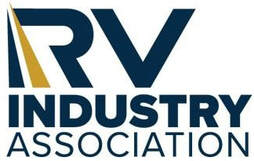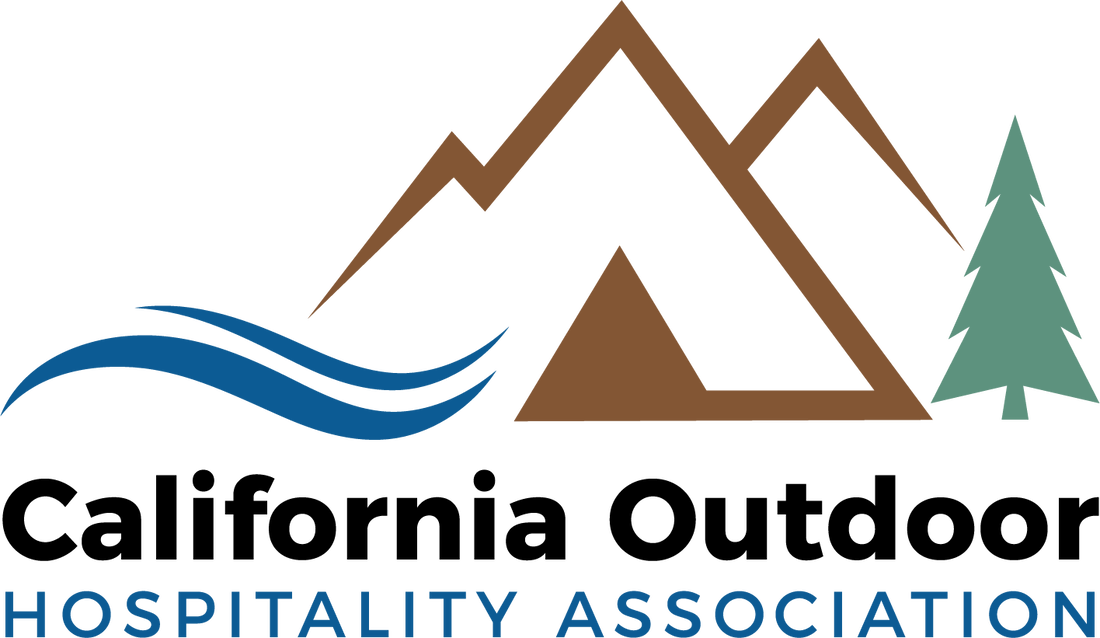|
By: Dyana Kelley, CampCalNOW President & CEO We were too, so we enlisted assistance from the experts.  With so many changes in the types of recreational vehicles on the road the question of the “code” has been a hot and often controversial subject. On May 17th, CampCalNOW President and CEO, Dyana Kelley, hosted Mitchel Baker, deputy director of code at Housing and Community Development (HCD) and Michael Ochs, Director of Government Affairs for the Recreational Vehicle Industry Association (RVIA), to speak during her weekly zoom, “Coffee & Connections with CampCalNOW”. To clearly understand the subject, we needed to be clear on the terms and definitions. The RVIA refers to the “sticker” as a seal while HCD describes it as a label. For all intent and purposes, the terms can be used interchangeably. The correct term for a towable type of unit is considered a park “trailer” whether it is a park model or travel trailer, according to RVIA. NFPA is the National Fire Protection Association. They are a global, self-funded nonprofit organization established in 1896, devoted to eliminating death, injury, property and economic loss due to fire, electrical and related hazards. NFPA 1192 is the standard on recreational vehicles. NFPA 1194 is the national standard for recreational vehicle parks. NFPA 1194 is superseded by the Special Occupancy Parks Act in California. ANSI is the American National Standards Institute. Founded in 1918, ANSI is a private, non-profit organization that administers and coordinates the U.S. voluntary standards and conformity assessment system. Our conversation began with Michael Ochs, explaining that the RVIA seal is designed to give the consumer confidence in knowing that the RV was built to a certain standard. RVIA has a team of 6 inspectors that regularly inspect the manufacturing plants. They do not inspect RVs. The manufacturers purchase the seals from RVIA based on annual production. RVIA is a private entity that provides a seal and only members of RVIA are entitled to use of the seal but other private agencies can also provide a seal. At present, RVIA represents about 95% of the manufacturers. However, there are several large custom manufacturers such as Prevost, Blue Bird, and Newmar that are not represented by the RVIA. This does not mean that they are not built to standard, but it does mean that they would not have a seal provided by RVIA.
How does this affect RV parks and campgrounds? Mitch Baker of HCD explained that CA Health & Safety Code 18871.5 for RV parks, requires any recreational vehicle occupying a lot in an RV park or campground bear a label, an insignia, or an insignia of approval OR (and this is an important OR) the vehicle owner provides reasonable proof of compliance with ANSI Standard No. A119.2 or A119.5 or NFPA 1192. CA Health and Safety code 18027.3 is the law that prescribes the ins-and-outs of RVs in CA. Code sections (f) & (g) state that any RV manufactured on or after January 1, 1999, follow NFPA standards and any RV manufactured prior to that date follow ANSI standard. Furthermore, 18027.3 does not mandate labeling by any specific company. Compliance to the standard while required, can also be self-certified. An owner of a Mercedes Sprinter Van that has been built out to be an RV can self-certify that the wiring in the vehicle is compliant with NFPA 1192. However, the Van itself is not subject to the code as it is a personal vehicle. Additionally, Mitch explained that inspection of an RV would only take place if a complaint had been filed and HCD would only inspect the outside of the vehicle unless permission to enter was granted by vehicle owner. If an inspection deemed the RV unacceptable to standard the owner of the RV (not the RV Park) would be cited. HCD could aid the park owner in removal of the vehicle if such action is deemed necessary. Mitch also stated that these actions are more inline with RV park “residents” not “tenants” or “occupants”. A question was asked about car camping in an RV park. Personal use vehicles are not considered recreational vehicles and not subject to the above referenced code. Anyone wishing to sleep in their car in an RV park is legally permitted to do so. Additional, Q & A determined that a fifth wheel trailer in a California RV park or campground can only be 400 square feet in set up mode: the same requirement as a park trailer. Previous industry standard limited fifth wheels to 430 square feet but in April 2020, the RVIA removed the maximum limitation for fifth wheels. Based on CA HSC code 18871.5 these units are not permitted in a California RV park. Modifications such as the addition of window style air conditioners could be in violation of code 18027.3 (h) (2) which states that it is unlawful to alter or convert ….. in a manner inconsistent with ASNI A119.5 or NFPA 1192. Additionally, modifications or additions to the outside of an RV could be inconsistent with NFPA requirements for dimensions of an RV. Bottom line: it would be incredibly difficult for a park owner to know if an RV was built to ANSI or NFPA standard and an RVIA seal is only one method of determination. Many owners pick and choose the codes they wish to follow but with all the new types of RVs and van conversions on the road today this may not be the sword you want to die on.
0 Comments
Leave a Reply. |
Check out more blog posts!
Categories
All
Archives
June 2024
|
|
2023 Copyright California Outdoor Hospitality Association. All Rights Reserved.
319 Nevada Street | Auburn, CA 95603 Phone: (530) 885-1624 | [email protected] | sitemap |

